Employees at the Humboldt Brewing Company, circa 1910s. All photos via the Humboldt Historian.
In 1987, former pro football player Mario Celotto opened the Humboldt Brewery in Arcata. It was Humboldt County’s first brewery in nearly five decades. Celotto borrowed the name from a brewery built in Eureka more than a hundred and twenty years earlier. Both enterprises changed hands a number of times and brewed in multiple locations. Relocation was so common in nineteenth century Eureka that thirteen brewing facilities were constructed, possibly more. Humboldt County’s early breweries were limited to Eureka and Arcata, but today they range from McKinleyville and Blue Lake to Scotia and Shelter Cove. Humboldt’s contemporary breweries are profiled later in this article, as is the perennial Humboldt Brewery. Presented first is an overview of the county’s early lesser-known brands.
###
In 1857 Union, Prussian-born Gustave Stanislowsky opened the eponymous Union Brewery. The Stanislowskys arrived in Union with the Jacoby family in 1852 and lived in a hotel owned by the latter for about two years. Stanislowsky then purchased land south of 8th and F streets from the Janes family, where he converted an existing barn into a house and operated the first public baths in the county (with an attached laundry). He constructed the brewery in late 1856 and opened the following January. Advertising claims that his lager and ale were “unsurpassed” in California, being made by “brewers of long experience in Europe.” Eight months later Stanislowsky leased it to Theodore Wollweber. By the beginning of 1859 it had been leased again, to Hiram Wood. The Union closed by the end of the year or shortly thereafter.
In the 1860 census, John Wagner is recorded as a Bavarian-born brewer and a boarder of Gustave Stanislowsky. In March of that year, he opened the Arcata Brewery and Distillery in the former Union Brewery brew house. Like his landlord, Wagner boasted of his brewing ability, although he only claimed that his lager and porter were “equal” in quality to other breweries in the state. The distillery produced bourbon and brandy. Advertising continued through 1861.
In August 1865, John Wagner re-emerged, advertising the Eureka Brewery and Distillery, offering the same line he’d produced in Arcata. The ad states that he had “enlarged his establishment” but any announcement of the original opening date in Eureka has yet to be located. Unfortunately, on the morning of April 15, 1866, a fire originating in the malt room destroyed the brewery and adjoining house. The Humboldt Times reported that Wagner and his wife were able to save, in addition to furniture and clothing, “a quantity of beer.”
Joseph Lynne constructed a brewery at Grant and Summer streets in August 1870 and revived the Eureka Brewery name. Three years later he sold it to Davis and Simmons. In 1877 they sold the Eureka to Patrick McAleenan and Charles Huk, who built a new brewery at 103 First Street. The partnership ended in 1883 with McAleenan retaining the business. An ad in the city directory two years later promised that “no sour beer” would be sold by the recently remodeled brewery, which included a new thirty-eight-barrel copper kettle. Patrick McAleenan was also a founding partner (with Daniel Murphy) in Eureka’s Western Hotel which opened in 1884 on the southeast corner of First and D streets.
In 1895, John Haltinner, the new owner of the Humboldt Brewery, also purchased McAleenan’s Eureka Brewery. In a 1901 advertisement he advised, “A beer glass generally contains Eureka beer. It should never contain any other kind.” That year the brewery is reported to have produced 744,000 glasses (248 pints per barrel x 3,000 barrels). Haltinner formed a short-lived partnership with Axel Johnson in 1902. In 1904 he and Johnson sold the Humboldt brand and closed the Eureka Brewery.
Eureka’s other known brands either appropriated their names, not uncommon at the time, or they were franchises. The earliest, Joseph Tucker’s San Francisco Stock Brewery, was in production by February 1872 on the north side of First just west of E Street (later part of the Baird’s Opera House site). Next, Murray and Zickgraff ’s United States Brewery, at the “Head of F Street” according to the 1890 city directory, is believed to have included a malt room or separate malt house. Three years later W. Kersten’s Philadelphia Brewery of Eureka was in operation at the same location. but now listed as F and Thirty-second streets. Humboldt also brewed there (succeeding the Philadelphia) making it the only local brewery utilized by three different brands. I wasn’t able to locate Thirty-second Street on city maps (and addresses may have shifted) but today the 3200 block of F Street is south of Harris between Everding and Hodgson.
From the Humboldt Times.
###
In the fall of 1854, Daniel F. Gilbert, Eureka’s recently appointed Justice of the Peace, established the Humboldt Brewery on the north side of Second Street between E and F. An advertisement in the Humboldt Times from September of that year announced that head brewer Picquet Mayheifer would be producing lager, ale and porter, in bottles or by the barrel. This is remarkable since, due to the high price of bottling equipment, most American until after Prohibition. None of Humboldt County’s breweries sold their beer exclusively by the barrel other early breweries are known to have bottled.
Daniel Gilbert wasn’t the only person in the United States to use the name Humboldt Brewery, but my research suggests that he was the first. He deserves recognition for building one of the earlier breweries on the West Coast, bottling his beer when few did (or would, for decades to come) and for the longevity of the brand he originated, which was active for eight decades—far longer than the other Humboldt Brewery(s), which were located in San Francisco and Stockton, in Elko, Nevada, in Humboldt, Kansas, and, following prohibition, in Humboldt, Iowa.
Nothing further is known about Gilbert or his tenure as a brewery owner, but advertising shows that by late 1865 Louis Weyh was operating the Humboldt Brewery at Second and D streets. In 1867 Weyh sold it to Jacob Marhoffer and Charles Huk who built a brewery a block away at Second & C (Charles and his wife Margret Huk were owners of Arcata’s Union Hotel at the time). A year later Marhoffer departed. In early 1873 Huk built a new brewery at Fifth & A, but several months later he sold it to his former partner Jacob Marhoffer and Joseph Wenger. In 1876 Wenger dropped out and Marhoffer found a new partner, James Harper, one of his co-owners in the Humboldt Soda Works, located at Fifth & B. Ownership passed to Hern and Glatt by the mid 1880s and the partners constructed a brewery at Wabash & G streets. Glatt (without Hern) later moved to Harris east of M Street. Hotel Grand owners Ambrose Foster and Eugene Mowry bought the brand (and the Second and C streets brewery) in 1887. Simon Woelfel owned it by 1890. Woelfel sold it to Eagle House builder Henry Tornroth, who held it until the mid 1890s. Tornroth also purchased the malt and brew house at F and Thirty-second around the time he acquired the brand.
John Haltinner purchased the Humboldt Brewery from Henry Tornroth in 1895. Born in Switzerland, Haltinner immigrated to the United States when he was eighteen to work in his uncle’s Santa Rosa brewery where he stayed for several years, eventually purchasing it. Later, upon acquiring the Humboldt and Eureka breweries, he relocated to Samoa and rowed across the bay to work each morning. In 1902 Haltinner formed a partnership with Axel Johnson. They sold the Humboldt brand (renamed the Humboldt Brewing Company) just two years later. In late 1904, new owners Palmtag and Cressman began constructing a brewing complex on Broadway, but halfway through the project their partnership ended.
The building at right is the Eureka Brewery at 1st and E in 1888. Constructed in 1877, it operated until the mid-1900s.
Palmtag and Cressman sold the Humboldt brand and their Broadway property to Los Angeles Brewing Company president Paul Max Kuehnrich in 1905 and he funded the completion of the brewery. Around the same time John Haltinner sold the defunct Eureka Brewery on First Street to Kuehnrich who altered it to produce steam beer while the Broadway brewery was being constructed. It was later used for the company’s downtown offices. The German-born Kuehnrich had been employed by the American Brewing Company of Chicago (in a position that required extensive travel) prior to being elected president of the Los Angeles Brewing Company in 1897. He subsequently relocated from Chicago to Southern California. His ownership was brief, but Kuehnrich was at the helm of the Humboldt Brewing Company during its most eventful era.
On June 8, 1905, the new brewery on Broadway, offering free barbeque and beer, opened to a crowd of more than 5,000 people. Many rode the Humboldt Transit Company’s streetcar to the brewery located near the end of Harris Street. The Eureka Military Band performed throughout the afternoon. Accounts of the day’s unscheduled activities vary widely. According to one attendee, an altercation occurred between two men and was quickly deflected away from the crowd. Others remembered events differently, one stating that “the affair wound up with a bunch of the most interesting battles ever waged in the city.” Another said “the brew took effect on many of the revelers and the world war started and was fought all the way from the brewery to Fourth Street.”
Humboldt Brewing Company at Broadway and Harris, circa 1910s.
Four months later the brewery burned to the ground. Coals left under a cauldron of pitch in the barrel room (located in the steam brewery) were determined to be the source. The fire began at night and by the time it was discovered early the next morning it had damaged the brewery’s fire suppression system. Hydrants had yet to be installed in the area so the hook and ladder and engine companies that responded were unable to control the spread of the inferno, which ultimately destroyed the five-story lager brewery. By mid-day only the carpentry shop, stables, and bottling plant remained. A new, larger brewery (this time constructed with brick and steel) was in operation by the following year. John Haltinner, who’d been traveling in Europe since selling the brand, returned to manage the steam brewery.
In June 1907 Paul Kuehnrich sold the Los Angeles Brewing Company to George Zobelein. Zobelein arrived in Los Angeles in 1869, and, after operating a grocery store for several years, began working at his father’s New York Brewery on Main Street. In 1882 he partnered with fellow German immigrant Joseph Maier to purchase another early Los Angeles brewery, the eight-year-old Philadelphia Brew House. They renamed it the Maier & Zobelein Brewery and offered employees the incredible incentive of seven- minute beer breaks every hour. The partnership continued until the death of Maier in 1904. Tension developed between Zobelein and Maier’s heirs and they parted following a lawsuit in early 1907. The Maiers continued as Maier Brewing Company while Zobelein bought the Los Angeles Brewing Company and its assets, which included the Humboldt Brewing Company.
Before 1911, when John R. Hagan was sent from Los Angeles to manage Humboldt’s Broadway brewery, the facility had been brewing 5,600 barrels a year, a fraction of its capacity. A few years later a profile in the Eureka Herald dubbed Hagan the “Patron of Purity” because, in addition to his insistence on cleanliness and the use of the highest quality ingredients available, he had a well drilled on the brewery’s property and regularly tested the water. In 1915 the growing brewery signed a contract to produce Wagner’s Pale Alpenweiss Beer for the Wagner Distributing Company in San Francisco. Humboldt’s own beers at the time included Humboldt Extra Pale, Eureka’s Best, and Pride O’ Humboldt Lager. By 1917 the brewery was producing 50,000 barrels.
A series of ads coincided with the Hagan era claiming the numerous benefits that might be gained by drinking Humboldt Beer, including everything from increased strength and digestive relief to emotional well-being and unprecedented longevity: “Drink Humboldt Beer and live to be a thousand years old.”
Under Hagan the brewery thrived until the Wartime Prohibition Act closed it along with six of Eureka’s bars on July 1, 1919. Andrew Volstead’s House Resolution No. 6810 (the National Prohibition Act) brought an end to the other fifty-seven bars by January 1920. They would be replaced by more than a hundred speakeasies. Unlike some breweries, the Humboldt Brewing Company didn’t survive Prohibition by making soda, malt extract or near beer (or full- strength beer illegally as Maier Brewing Company did). It simply hired its former head brewer, Fritz Kurz, to turn the equipment on each day and provide security for the otherwise abandoned complex. Thirteen years later George Zobelein sold the idle brewery to George Mullin of San Francisco who took advantage of the Cullen-Harrison Act (which allowed participating states to permit the production and sale of low alcohol beer and wine ahead of the Twenty-first Amendment). Mullin had some modern equipment installed and the day before brewing resumed the public was again invited to the brewery. As many as 3,000 people toured the facility and new beer garden.
Bottling at the Humboldt Brewing Company at Broadway and Harris, circa mid-1930s. These men are bottling Brown Derby Pilsner for the Safeway grocery store chain. Stacks of Brown Derby and Humboldt Beer boxes can be seen in the back left of the photo.
Just four months after purchasing the brewery, the Oakland Tribune reported that on June 19, 1933, Mullin signed “one of the largest single beer deals ever to be negotiated” with Western States Grocery Company. Western States was the parent company of McMarr, Skaggs, Piggly-Wiggly and Safeway with more than 3,300 stores combined. The ten-year, $23,000,000 contract called for the newly renamed Humboldt Malt & Brewing Company to provide Western States with 75,000 barrels a year of bottled (and later canned) beer. The following month the brewery announced that it was expanding to increase capacity to 200,000 barrels (6.2 million gallons). San Francisco construction company Barrett & Hilp was hired to complete the work. It returned in 1936 to construct the Eureka Municipal Auditorium.
Growth continued for the next few years. In late 1934 a spur track from the Northwestern Pacific Railroad’s main line was laid to the back of the building. By 1935 it was the sixth largest brewery in California. New warehouses were constructed, and the company consistently declared robust dividends. In early 1936 the company began canning some of its beer, a new technology at the time. The brewery’s line included Humboldt Beer, Humboldt Extra Pale, Pride of Humboldt Extra Pale Lager, Bond Street Lager, Excell Pale, Eureka Ale, Eureka Extra Pale Lager, Lisco Lager, Monogram Lager, Gold Medal Extra Pale, Associated Brand Lager and Brown Derby Pilsner.
For unknown reasons Western States began contracting elsewhere in the late 1930s (including, ironically, with the Los Angeles Brewing Company), leaving the brewery without a buyer for most of its sizeable output. By February 1940 the Humboldt Malt and Brewing Company was declared bankrupt and closed later in the year. An antitrust lawsuit seeking $2,225,000 in damages was brought against the grocery conglomerate and several others in 1939, but it wasn’t settled until December 1942, for just $100,000.
For several decades the former brewery buildings on Broadway were used by other businesses, including Nulaid Eggs, before being demolished. The Victoria Place shopping center was eventually constructed on the site.
Following World War II an increasingly smaller number of breweries produced an increasingly larger volume of beer through the purchase, merger, or takeover of regional and local brands. By 1983, as few as eighty breweries were operating in the U.S. Most were producing similar-tasting pale lagers with lackluster ingredients; connoisseurs looking for variety had to seek out expensive imports. Thankfully, a few of the younger brewers weren’t producing the tired, flavorless beer of the era and their influence shaped the industry that exists today.
Inside the Humboldt Brewing Company at Broadway and Harris, circa mid-1930s. On the left is the copper brew kettle. The copper mash tun is on the platform in the back corner.
###
The story above is excerpted from the Summer 2019 issue of the Humboldt Historian, a journal of the Humboldt County Historical Society. It is reprinted here with permission. The Humboldt County Historical Society is a nonprofit organization devoted to archiving, preserving and sharing Humboldt County’s rich history. You can become a member and receive a year’s worth of new issues of The Humboldt Historian at this link.
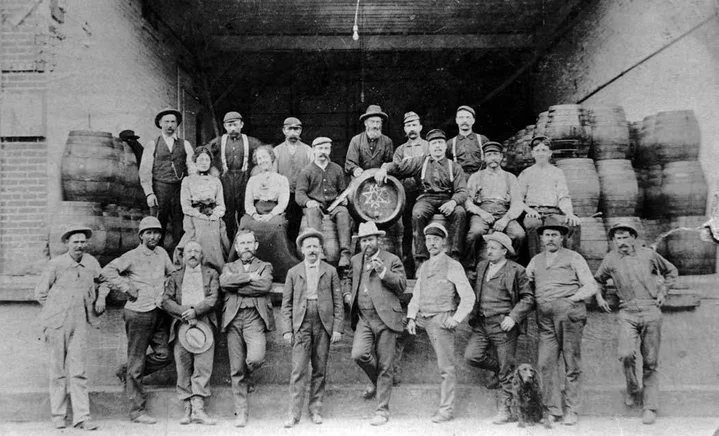
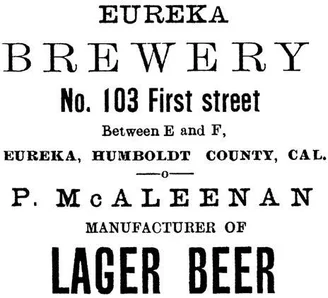
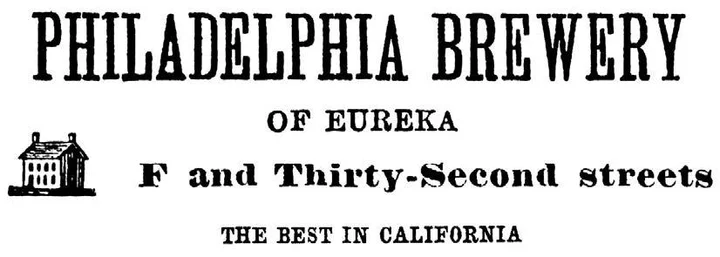
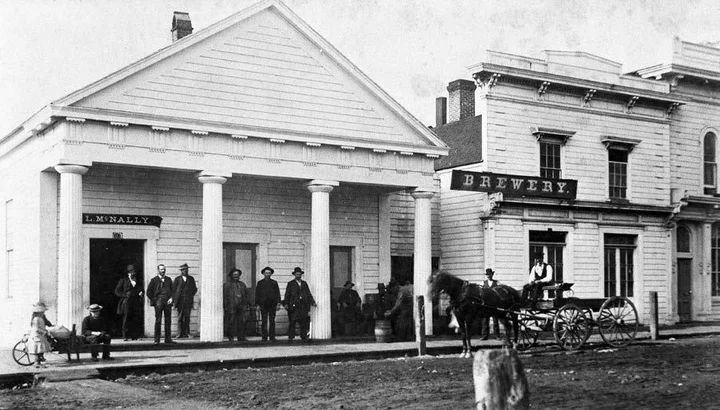
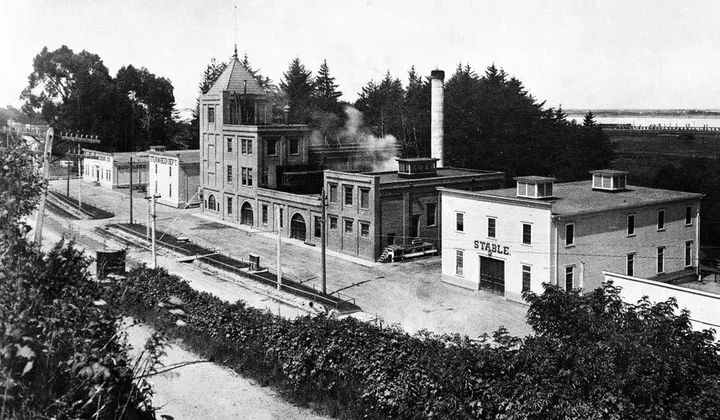
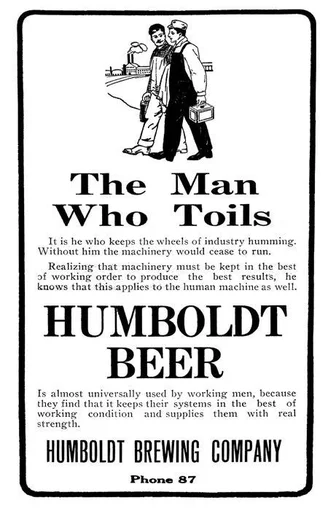
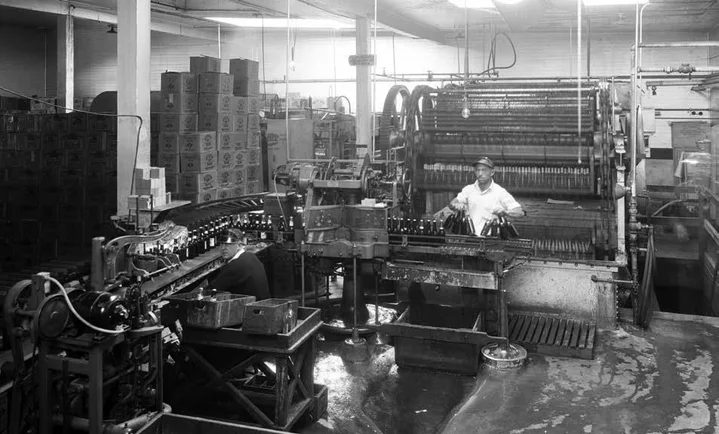


CLICK TO MANAGE